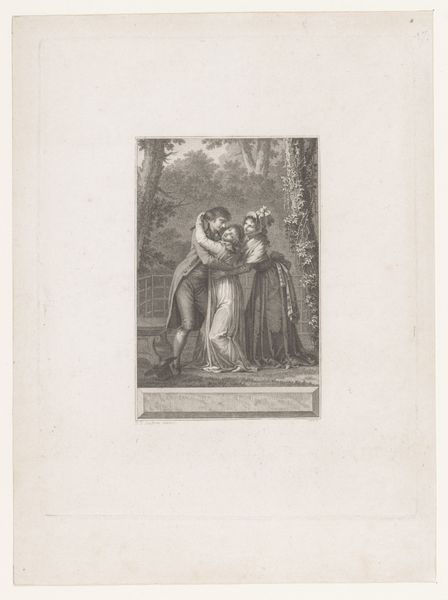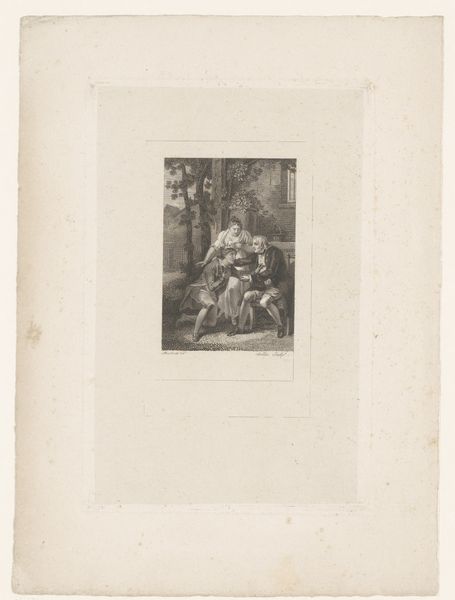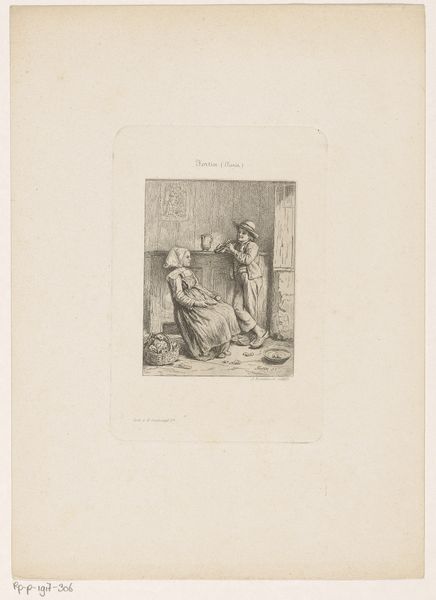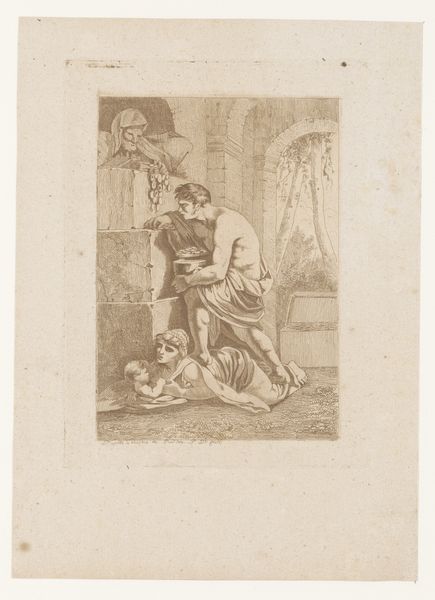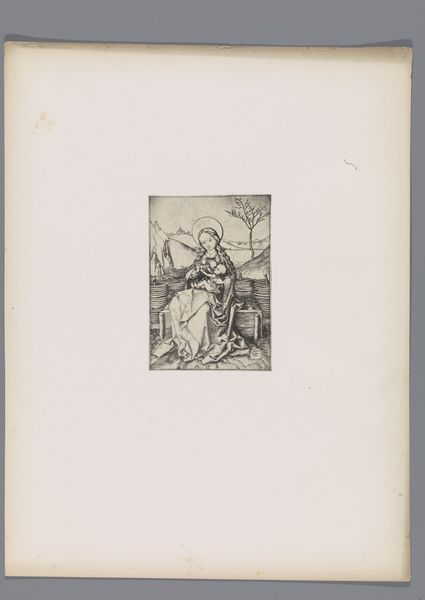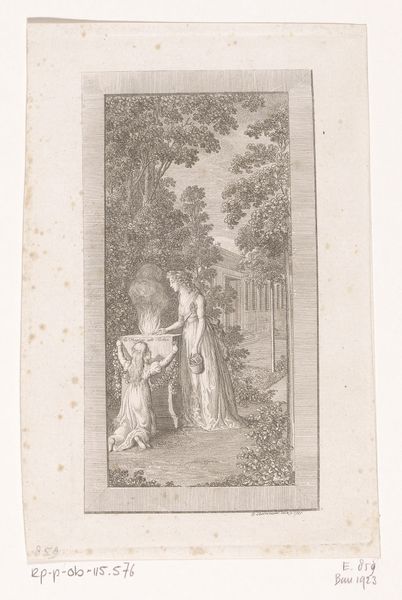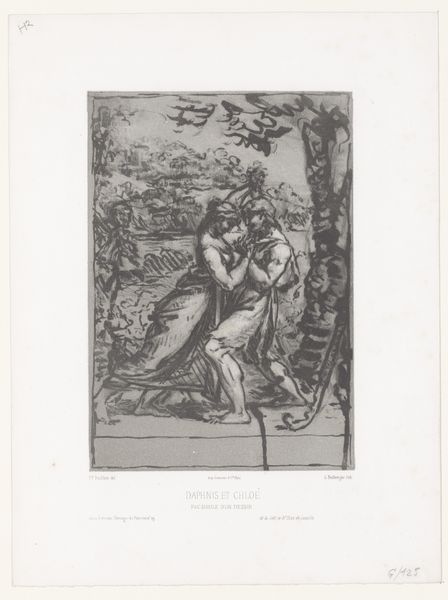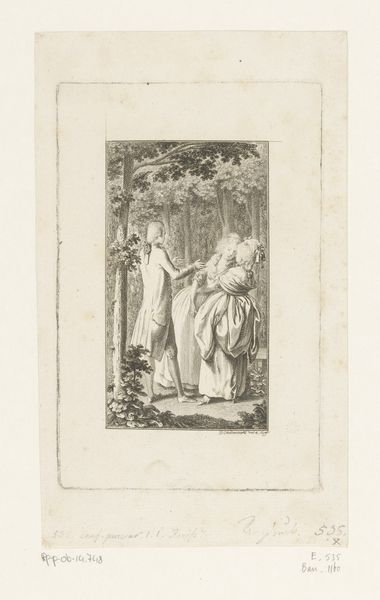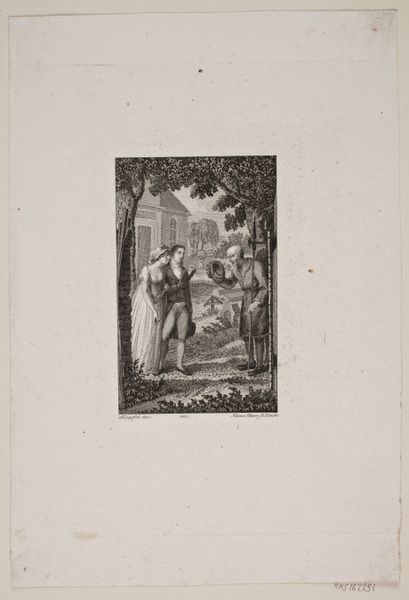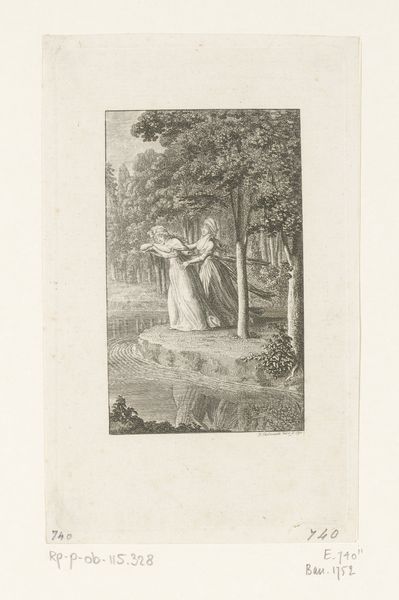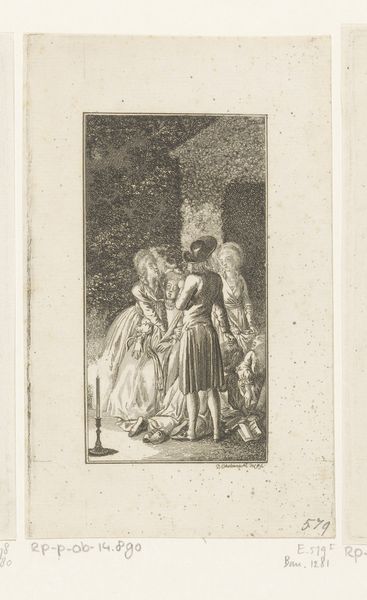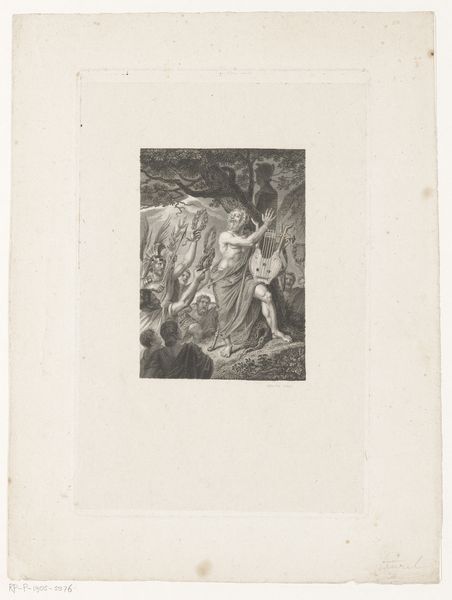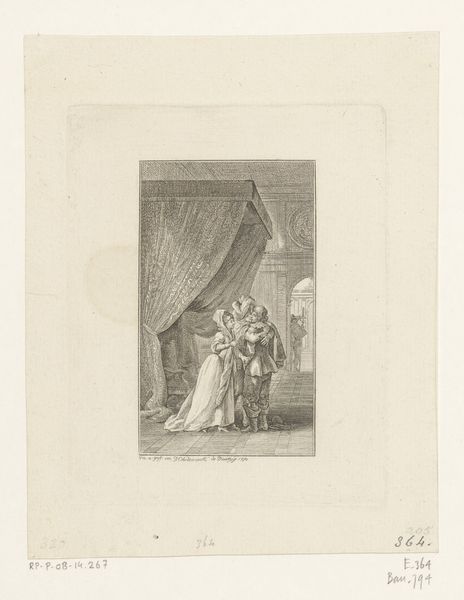
print, engraving
# print
#
figuration
#
romanticism
#
genre-painting
#
history-painting
#
engraving
Dimensions: height 211 mm, width 165 mm
Copyright: Rijks Museum: Open Domain
Curator: I'm struck by the almost ghostly pallor of this print, Jacques Louis Copia's "Eerste kus van Julie en Saint-Preux," made in 1808. It has a real weight to it. Editor: And a tenderness. Tell us more about this “first kiss." Given that it's rendered in engraving, I am immediately curious about its circulation as a material object. Curator: Well, this intimate scene derives from Jean-Jacques Rousseau's epistolary novel, *Julie, or the New Heloise*, a sensation when published. Copia, as an engraver, was exceptionally skilled in translating paintings into widely available prints. This work romanticizes bourgeois virtue. The encounter takes place in a carefully rendered garden. We have this scene of burgeoning romantic love. Editor: So, prints such as this served a vital role in disseminating cultural narratives. Engravings such as this would have functioned in a number of ways as both propaganda and sentimental work, creating visual literacy through distribution. What were the artistic debates concerning labor in printmaking at this moment? Curator: During this time, engraving involved a collaboration between artists and artisans, and it held a unique position in society. While paintings were typically commissioned by elite members of society, a greater number of prints were exchanged among members of the middle classes who lived by a different standard of consumerist behavior. Editor: How does it resonate with its contemporary audience versus now, culturally? Did the narrative then provide aspirational fantasies of forbidden love or didactic messages of the value of morality for the budding bourgeoisie? And to me, the appeal of engraving has a very handmade dimension, but because they were distributed commercially, how did this relate to early discussions on fine arts versus commercial applied arts? Curator: These printed versions certainly became aesthetic and social commodities in their own right. It would be worth studying if such engravings encouraged both identification with fictional characters or the collection of such romantic, historical prints to further the engraver's professional development within an increasingly competitive environment, with all parties impacted by shifting social standards in both rural and metropolitan environments. Editor: Absolutely. This image’s continued availability today certainly gives us plenty to ponder, historically and materially. Curator: Indeed, the questions it poses about artistic labor and market circulation make Copia's "Eerste kus van Julie en Saint-Preux" endlessly fascinating to me.
Comments
No comments
Be the first to comment and join the conversation on the ultimate creative platform.
